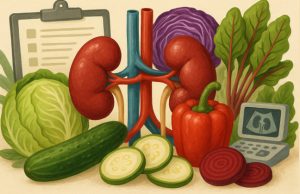
Although cucumbers are rather easy plants to produce, problems can still arise. When your cucumbers turn yellow and you’re unsure of the cause, this is one of the most frequent issues you might experience. Diseases, pests, or environmental issues can cause cucumber plants and fruits to become yellow. This guide will walk you through figuring out why your cucumbers are yellow and what to do about it.
Why Your Cucumbers Are Yellow
Yellowing cucumbers can be frustrating, but they don’t always mean your plant is in poor health. Even if your cucumbers are yellow due to pests or other problems, solutions are available to help the cucumbers bounce back.
1. Overripe Cucumbers
The predominant reason for cucumbers turning yellow is the overripening of the fruit. Contrary to popular belief that crisp and green cucumbers are ripe, botanically speaking, they are considered ‘immature’ at this stage and haven’t reached full ripeness. If cucumbers are not harvested regularly, they will continue to ripen on the vine, eventually changing to a dark, golden-yellow hue. At this point, the cucumbers acquire a bitter taste, mushy texture, larger seeds, and tough skin, rendering them unpalatable.”
The solution:
Harvesting your cucumbers frequently—ideally every day or two—is the best defense against overripe ones.
Cucumbers can ripen quickly, and it’s sometimes hard to see green cucumbers in dense cucumber vines, so you may need to push leaves away when harvesting. You can also prune back some of the vine’s foliage to make it easier to spot cucumbers that are ready to pick.
If you spot overripe, yellow cucumbers on the vine, remove them as soon as possible so they don’t sap the cucumber vines of energy. While overripe cucumbers don’t taste as good as green ones, they are still edible and can work in relishes. Alternatively, allow yellow cucumbers to ripen fully on the vine and then harvest them for seeds for next year’s garden.
2. Water Stress
Cucumbers thrive in well-hydrated conditions, requiring consistent moisture for optimal growth. Nevertheless, subjecting cucumber vines to excessive or insufficient watering can induce stress and lead to the production of yellowed fruit.
The solution:
Cucumbers are just like most other garden plants in that they require frequent irrigation. For healthy growth, cucumbers require approximately one inch of water per week. However, if you are unsure if your plants are receiving enough water, you might wish to acquire a rain gauge or test the soil with your finger. If the top 1 to 2 inches of soil feels dry, it’s time to water the cucumber vines.
Cucumbers grown in containers dry out more quickly than plants grown in garden beds, so it’s doubly important to stay on top of watering if you keep a container garden. One way to ensure your cucumber plants stay nice and moist is to install a thick 1- to 3-inch layer of mulch around the plants, which slows down soil evaporation rates.
3. Nutrient Deficiencies
Besides having a high demand for water, cucumber vines are considered nutrient-intensive plants, facing challenges in nutrient-deficient soils. Insufficient nutrients can impede their growth, causing stunted vines and slowed development. Furthermore, cucumbers cultivated in impoverished soils may exhibit discolored leaves and produce yellowed fruit.
The solution:
Nutrient deficiencies are more likely to develop if you grow cucumbers or other heavy-feeding plants in the same area year after year. One good way to prevent this is to rotate your crops annually and include legumes or nitrogen-fixing cover crops, as these plants naturally replenish soil nutrients.
You can also prevent nutrient-deficient soils by testing your garden soil every few years and amending it if needed. Applying fertilizer and adding an annual application of compost or aged manure to your garden before planting in spring can also provide cucumbers with the nutrients they need to grow correctly.
4. Lack of Pollination

Cucumber plants bear both male and female flowers, requiring pollinators to visit both types for fruit setting. Adequate pollination is crucial for female cucumber flowers, necessitating at least 8 to 12 visits from bees to yield well-developed cucumbers. Incomplete pollination can result in improperly formed immature fruit, often leading to yellowing and premature dropping from the plant. If you observe abundant flower production on the vines but notice yellowing of cucumbers before reaching maturity, it could indicate a pollination problem.
The solution:
If your cucumbers are turning yellow due to lack of pollination, take steps to make your garden more pollinator friendly. This can include reducing pesticide use and opting for all-natural pest control options, like fruit protection bags and companion planting. You can also increase pollinator activity by growing flowering herbs and plants like marigolds and borage near your cucumber plants to attract beneficial insects.
5. Yellow Cucumber Varieties
While it may be apparent, certain cucumber types are designed to undergo a yellow ripening process. Varieties such as C. sativus ‘Lemon’, C. sativus ‘Boothby’s Blonde’, and C. sativus ‘Silver Slicers’ exhibit yellow skins even upon reaching maturity. Similar to their green counterparts, yellow cucumbers are typically harvested when they display a light yellow hue, avoiding the point where their skin transitions to a deep, dark yellow, indicating overripeness.
If you did not intentionally plant yellow cucumbers, there’s a possibility of mislabeled seeds or the inadvertent inclusion of a stray seed from a yellow cucumber variety in your seed packet. This scenario is particularly plausible if you observe a solitary cucumber vine in your garden exclusively producing yellow cucumbers.
The solution:
Enjoy your colorful cucumbers. Yellow cucumber varieties are just as tasty as green cucumbers, and they are often less prone to bitterness as they mature.
6. Plant Diseases

Certain plant diseases, such as cucumber mosaic virus, fungal issues, and leaf spot, can also result in yellowing cucumbers. However, these plant diseases also affect the cucumber vine itself. Many of these diseases are spread by insect vectors, including the cucumber beetle, and affected plants will often develop spotted, wilted, or otherwise damaged leaves in addition to their yellowed fruit.
The solution:
Most plant diseases that cause yellowing in cucumbers are difficult to cure, so treatment is usually focused on prevention. Fungal issues are often caused by poor airflow and wet cucumber leaves, but you can reduce fungal spread by watering your plants only at the soil line and pruning away extra leaves to increase air circulation. Diseases that are spread by insect vectors can be prevented with organic pest control methods and annual crop rotation. Choosing disease-resistant cucumber cultivars is another effective way to keep plant diseases out of your garden.
7. Pest Issues
Cucumber pests can transmit plant diseases that cause yellowing fruit, but some pests can also damage the cucumbers themselves and reduce fruit quality. Different pests damage cucumbers in different ways, but commonly, these destructive insects leave behind a characteristic stippling pattern on plant leaves and fruit as they feed. Some of the most common cucumber pests that damage cucumbers include the striped cucumber beetle, thrips, and spider mites.
The solution:
Companion planting with aromatic herbs and flowering plants can naturally repulse many different garden pests or attract beneficial insects that feed on nuisance pests to your garden. You can also keep pests off your cucumbers by installing floating row covers, but you need to hand-pollinate the cucumbers if you go this route. Organic insecticidal soap and neem oil sprays can also treat many pest infestations, and they’re much safer to use around the garden than chemical pesticide alternatives.




















